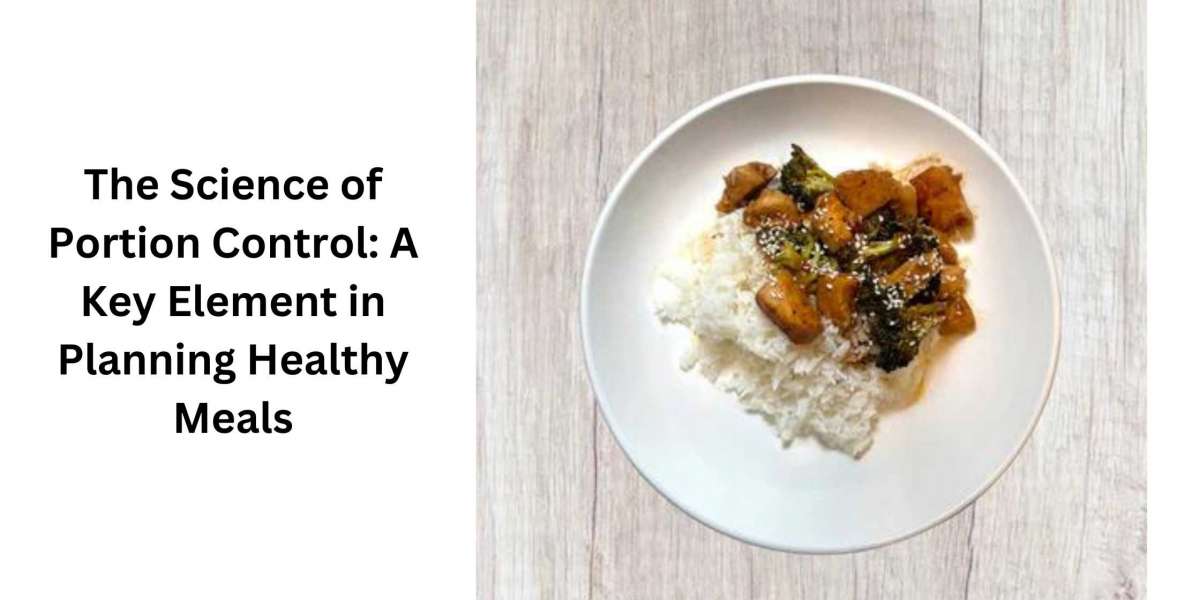One crucial aspect often overlooked is portion control – the science of managing the quantity of food on our plates. Understanding the significance of portion control is fundamental when planning healthy meals for the week. This blog will delve into the science behind portion control and its role in fostering overall well-being.
Understanding Portion Control
Portion control refers to managing the amount of food we eat in a single serving. It involves being conscious of portion sizes to ensure we consume the right balance of nutrients without overindulging. The science behind portion control is rooted in the relationship between the amount of food we eat and our body's nutritional needs.
The Importance of Portion Control
- Caloric Intake Management
Controlling portion sizes is crucial for managing caloric intake. Consuming more calories than our body needs can lead to weight gain. By practicing portion control, we align our calorie consumption with our body's energy requirements, promoting weight maintenance or loss when needed.
- Balanced Nutrient Intake
Portion control facilitates a balanced intake of essential nutrients. Planning healthy meals for the week involves incorporating a mix of proteins, carbohydrates, fats, vitamins, and minerals. Controlling portions ensures that we consume diverse nutrients necessary for overall health.
- Preventing Overeating
Overeating can strain the digestive system and lead to discomfort. Portion control helps prevent overeating by providing a clear guideline on appropriate serving sizes. This, in turn, supports digestive health and minimizes the risk of issues such as bloating and indigestion.
- Blood Sugar Regulation
The science of portion control plays a vital role in regulating blood sugar levels. Consuming balanced portions of carbohydrates, proteins, and fats helps prevent spikes and crashes in blood sugar, promoting sustained energy levels throughout the day.
- Mindful Eating Practices
Portion control encourages mindful eating, fostering a deeper connection between individuals and their food. Awareness of portion sizes promotes a more intentional and enjoyable dining experience, allowing individuals to savor and appreciate each bite.
Practical Tips for Portion Control:
- Use Measuring Tools: Use measuring cups, spoons, or a kitchen scale to accurately portion foods. This is especially helpful when dealing with grains, proteins, and fats.
- Visual Cues: Familiarize yourself with visual cues for portion sizes. For example, a serving of protein is roughly the size of a deck of cards, and a serving of vegetables is about the size of your fist.
- Plate Composition: Divide your plate into sections for different food groups. Fill half with vegetables, a quarter with protein, and the remaining quarter with whole grains or starchy foods.
- Listen to Hunger Cues: Listen to your body's hunger and fullness cues. Eat slowly and pause between bites to assess your level of satisfaction. This helps prevent overeating.
- Avoid Distractions: Minimize distractions like watching TV or working on the computer while eating. Focus on the sensory experience of eating to recognize better when you are satisfied.
Conclusion
The science of portion control is fundamental in planning healthy meals for the week. By understanding the importance of managing portion sizes and incorporating practical tips into your eating habits, you can achieve a more balanced and nourishing approach to nutrition. Portion control empowers individuals to make informed choices about food intake, promoting overall well-being and contributing to a sustainable and healthy lifestyle.









